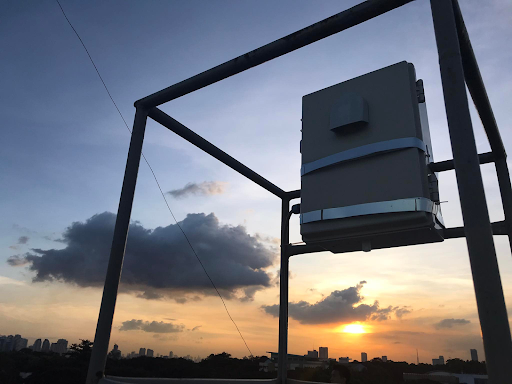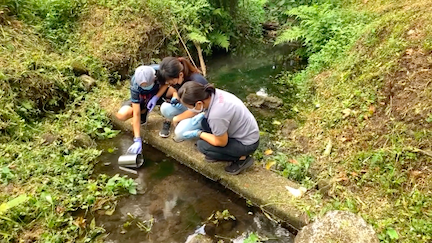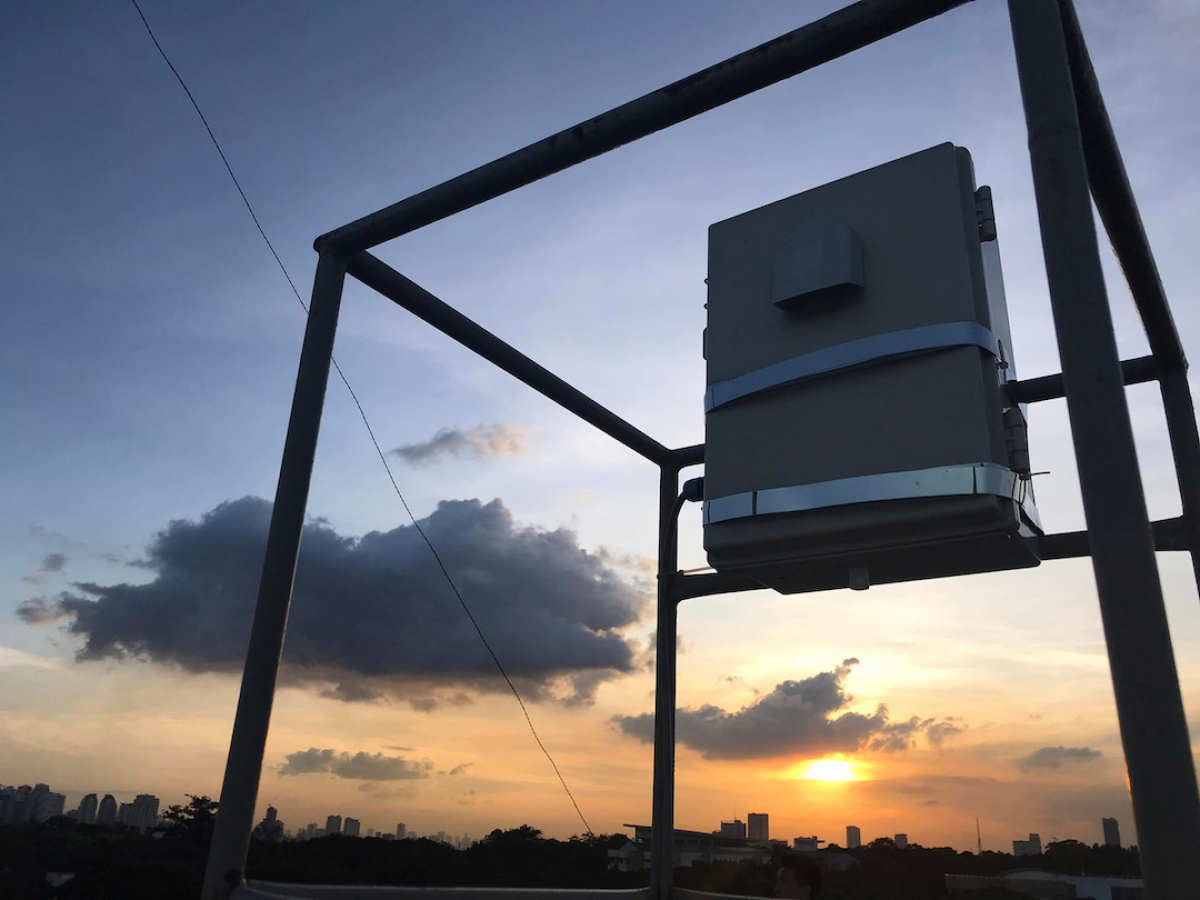Communities across the Philippines could become more environmentally sustainable, thanks to the University of the Philippines - Diliman College of Science (UPD-CS) spearheading the use of automated environmental monitoring technology and regular environmental testing procedures for possible deployment nationwide.

At the behest of UPD Chancellor Fidel Nemenzo, who prioritized the protection and preservation of UPD's natural environment in his vision for the campus, the UPD-CS led other colleges and institutions in the University in setting up sophisticated sensors for keeping an eye on the environment around the clock. The Chancellor appointed the multi-sectoral Task Force on Environmental Sustainability (TFES) to create environmental action points for a possible model for a green campus, which could then serve as the prototype for green spaces nationwide.
Real-time environmental monitoring
Two key action points determined by the expert team are the deployment in the UPD-CS' National Science Complex (NSC) of the AirboxSense system for real-time air quality reporting to the general public, and the establishment of an air and water quality monitoring network with the Diliman Environmental Management Office.
The AirboxSense was co-developed by UP and foreign university partners with funding from the Asia-India Science, Technology, and Innovation Cooperation (AISTC). “Air quality monitoring using AirboxSense in the NSC started in August 2022. It’s an initiative between the Philippines, Malaysia, and India to put up these monitoring devices for air quality control,” explained Dr. Mylene Cayetano, a professor at the UPD-CS’ Institute of Environmental Science and Meteorology (IESM), a member of the UPD TFES, and the Philippine Principal Investigator for the AISTIC.

To complement the AirboxSense data, the IESM undertakes regular monitoring of the University’s various creeks and streams: water samples are collected at least once a month and analyzed in the laboratory to assess factors such as the presence of excessive nutrients and suspended solids, irregular pH, and alkalinity, among other parameters.
Towards a solar-powered campus
The UPD-CS also aims to lessen its ecological footprint through solar power installations throughout the NSC. By considering the optimal size and placement of solar panels, Dr. Cayetano and her colleagues were able to determine the best ways to address the campus' energy needs. Solar panels can save energy for the UPD-CS by lessening the dependency on fossil fuels during the daytime.
“Together with UPD-CS scientists Dr. Lillian Jennifer Rodriguez and Ms. Jelaine Gan, we calculated the area ng lahat ng rooftop ng CS buildings. We determined the surface area of the rooftops facing south. Then we proposed how many solar panels we need to install in CS para hindi na tayo dependent sa fossil fuels, and eventually we will transform into an efficient campus,” said Dr. Cayetano. “UPD-CS Dean Giovanni Tapang presented this idea to Chancellor Fidel, and it aligns with the Chancellor’s initiative to make UPD an environmentally-sustainable campus,” she added.
Deployment beyond UP
Going beyond the confines of the University, the UPD-CS, and the IESM collaborated with the Rotary Club of Makati on a system that reports real-time data on air quality via the Airtoday.ph website. The system was also initially designed to record and display air quality data on other areas outside the UPD, including the Lung Center of the Philippines and EDSA Muñoz.
“Picking up from this initiative, nagkakaroon ng other initiatives pa towards a smart campus and environmental sustainability,” Dr. Cayetano said. She cited the UPD Electrical and Electronics Engineering Institute (EEEI) for helping automate the AirboxSense through the UP Center for Air Research (UP CARE) program. Dr. Cayetano also highlighted the Robust Optical Aerosol Monitor (ROAM) developed by Dr. Len Herald Lim of the Institute of Chemistry, which could be deployed outside UPD in the future.
Aiming for nationwide deployment
Dr. Cayetano believes that these projects are of nationwide significance: the information they gather and the data they record will greatly help organizations and institutions across the country in finding solutions to environmental issues. “These [information and data] will eventually tell the numbers. Nasaan na tayo? Nasaan ‘yung baseline? Ano ‘yung emissions natin noong walang activities dahil sa pandemic? Ano naman ‘yung increase ng emissions noong nagkaroon ng activities such as face-to-face classes and the opening of the UPD campus and offices? By knowing these, we know where to stand. By knowing those numbers, we will know how to manage the impacts on the environment of such activities.”
Through these and other initiatives, UPD’s TFES is spearheading the creation of tailor-fit approaches to environmental challenges that can be implemented outside the campus. Data collected from these initiatives can also be used by local governments and other decision-makers in managing localized environmental activities.
For interview requests and more information on UPD-CS' automation and environmental monitoring initiatives and the TFES, please contact Dr. Mylene Cayetano at mcayetano@iesm.upd.edu.ph
For other inquiries, please contact media@science.upd.edu.ph. (UPD-CS)




